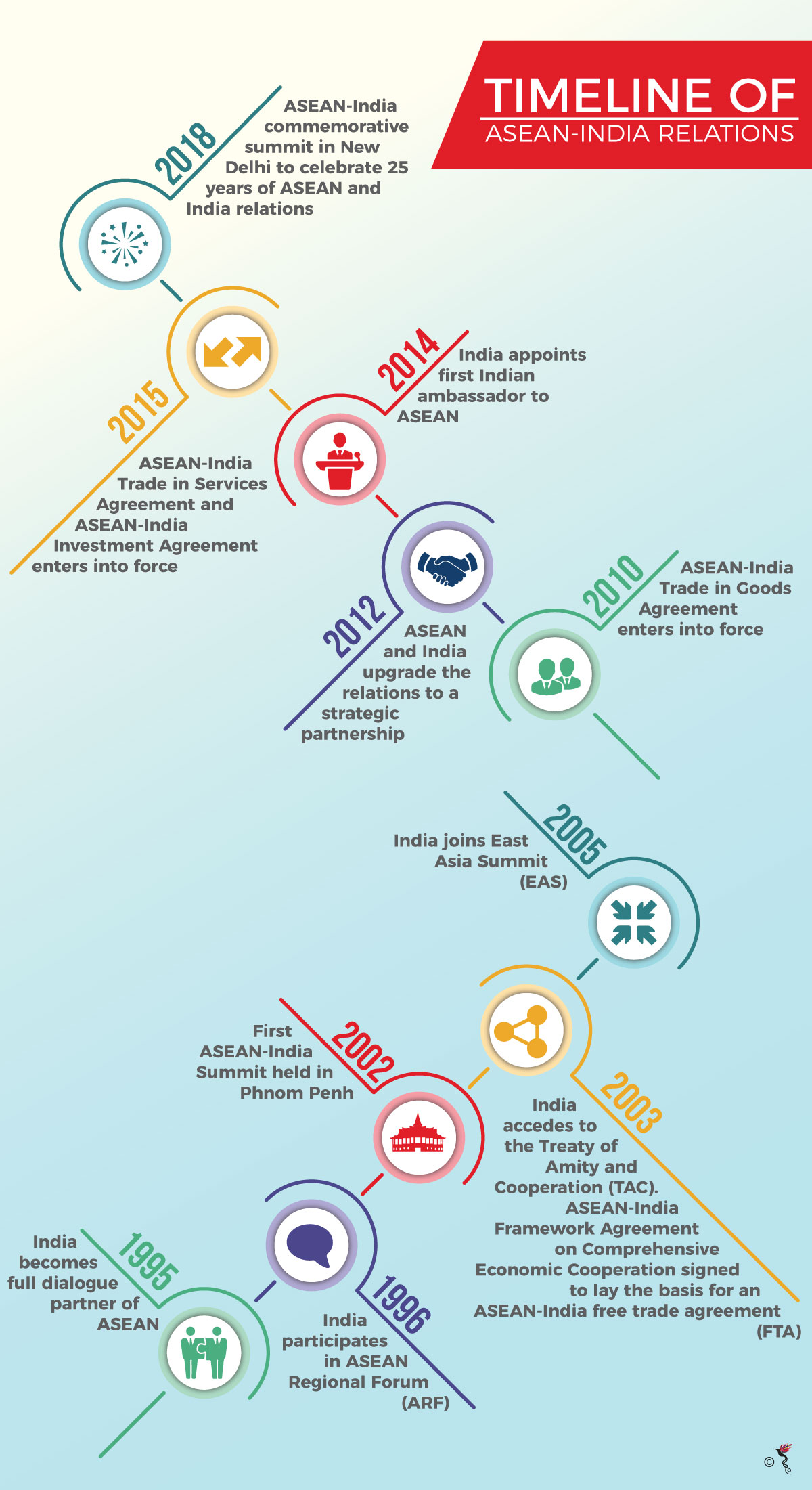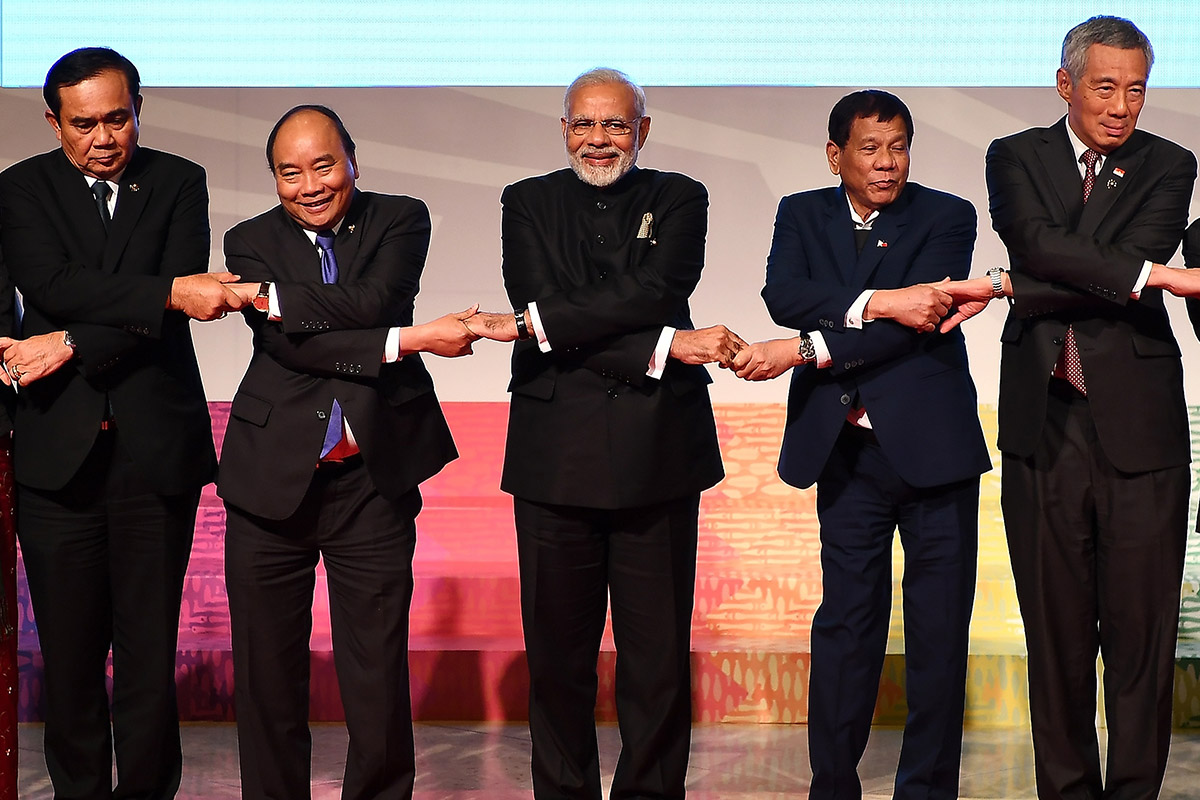India will be celebrating its 69th Republic Day celebrations on 26 January this year and for the first time ever, leaders of all 10 members of the Association of Southeast Asian Nations (ASEAN) have been invited as chief guests.
This marks a huge step in ASEAN-India relations which would also be commemorated in a summit held at the same time. Indian Prime Minister, Narendra Modi on his previous visit to the ASEAN region expressed his keen interest in strengthening cooperation with the ten-member organisation.
A relationship steeped in history
India and Southeast Asia share deep historic trade and cultural ties. Indian influence in Southeast Asia can be traced back to around 200 BC. The region was also under influence of the South Indian Chola and Pandyan dynasties. Trade between India and Southeast Asia was conducted via a land route through Assam and Manipur, reaching Burma (Myanmar today) and a maritime route across the Bay of Bengal. Goods that were traded included silk, gold and spices.
Besides that, one of the major Indian exports was its religion, language and literature which was heavily syncretised into local cultures. South Indian scripts have heavily influenced native scripts of the Thai and Khmer languages and languages of Malay and Bahasa Indonesia. Indian architectural and religious influences can be seen in ancient structures like Angkor Wat and the stupas of Borobudur. Indian epics like the Ramayana and Mahabharata have been expressed and interpreted in local culture, like the Khmer Lkhaon and Balinese Kecek dances. The stories have also been translated to other languages like Malay, Javanese, Thai and Burmese and retold using local story-telling techniques.
Fast forward to the modern era, and India is still a strong partner of this region – via its relations with ASEAN.
The ASEAN-India free trade agreement fully entered into force in 2015. Bilateral trade between the two have grown twentyfold to US$58 billion since formal relations began 25 years ago. ASEAN is India’s fourth largest trading partner and India is ASEAN’s eighth. Indian exports to ASEAN have grown to US$6.07 billion from US$25 billion in 2015-16 to US$31.07 billion in 2016-17. As of 2016-17, India’s imports to ASEAN stands at US$40.63 billion. This is an increment of 1.8% since 2015-16.
Besides that, there is still significant socio-cultural cooperation. The Student Exchange Program where ASEAN students travel to India and study at an Indian institution, ASEAN-India Network of Think Tanks and ASEAN-India Eminent Persons Lecture Series are a few examples of people-to-people cooperation. There is still a strong Indian diaspora presence in Southeast Asia. During a recent Indian diaspora conference in Singapore, over 4,000 attendees gathered to exchange ideas on how better to improve ties between India and ASEAN.

Look East, Act East
With China’s Belt Road Initiative (BRI) already enticing ASEAN member states with promises of infrastructure investments and financial aid, India has come to realise the strategic importance of ASEAN as it seeks to counter Beijing’s ambitious plans.
As such, Modi has reaffirmed ASEAN’s importance to India’s Act East Policy. The policy which was an evolution from the Look East policy introduced by former Indian Prime Minister, Narasimha Rao, aims at improving economic, security and strategic partnerships with eastern nations including ASEAN member states. Speaking during the ASEAN Summit in Manila last November, Modi reiterated that the policy “...puts this region at the centre of our engagement.”
In line with India’s hopes for better engagement, it has initiated a plethora of projects in various fields including, agriculture, science & technology, space, environment, human resource development, capacity building and renewable energy. There are also funds like the ASEAN-India Green fund and ASEAN-India Cooperation fund that offers financial assistance on a project basis.
In terms of infrastructure development, India is keenly pursuing the India-Myanmar-Thailand Trilateral Highway. It is looking to possibly extend the highway to include Cambodia, Vietnam and Lao. So far, a consensus on the India-Myanmar-Thailand Motor Vehicle Agreement (IMT MVA) has been reached – granting seamless travel across roads linking the three nations. In 2015, a line of credit of US$1 billion was announced to support connectivity projects in the region with an emphasis on CLMV (Cambodia, Lao, Myanmar, Vietnam) countries. There have also been great strides taken to improve maritime and air connectivity between ASEAN and India.
A key driver of ASEAN-India relations would be the Regional Comprehensive Economic Partnership (RCEP) which is still under negotiations. If completed, RCEP would encompass 50 percent of the global population, 30 percent of global income and trade. However, India remains sceptical of liberalising its goods sector as part of the trade deal which might harm its “Make in India” initiative. Nevertheless, India remains supportive of granting greater access to the services sector which it claims other governments have not paid much emphasis to its demands in that aspect.
As trade deals go, its impossible to see eye-to-eye on every aspect. Regardless, a quick conclusion to RCEP will see greater mobility of goods and people between India and ASEAN. Just like how China is reviving its old trading routes via the BRI, India has an opportunity here to leverage on its own historical lineage with the region and bring ASEAN-India relations to a whole new level.
Recommended stories:
